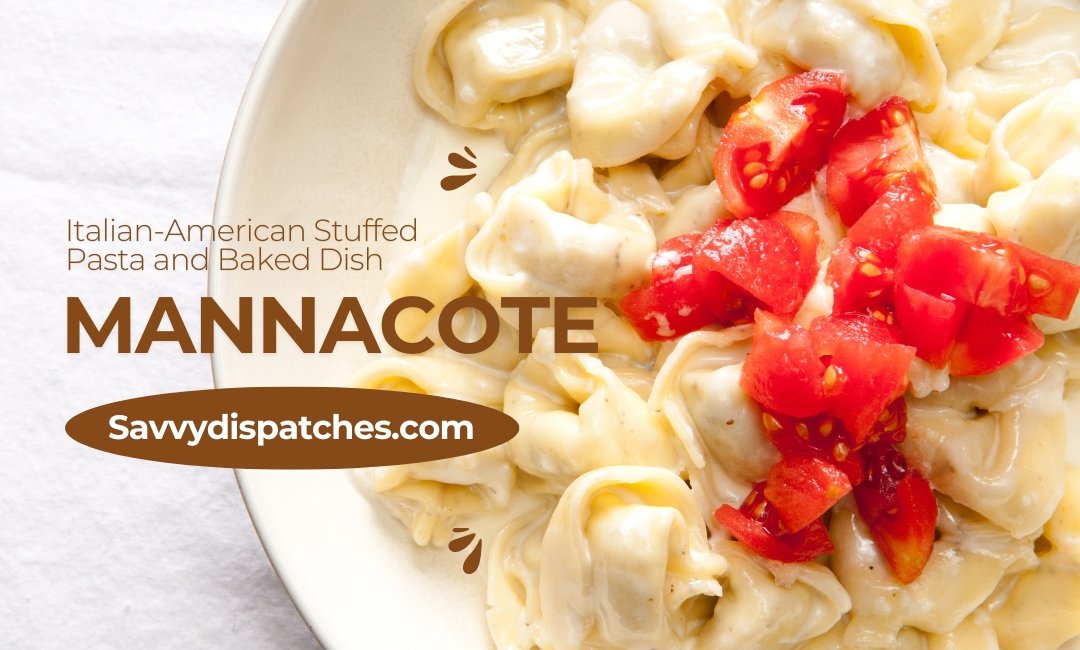Travel
King Charles Sustainable Travel Initiatives: Way to a Greener Future

King Charles has long been an advocate for environmental conservation, and his commitment to sustainable travel is a reflection of his broader efforts to combat climate change. As global tourism and transportation contribute significantly to carbon emissions, the King’s initiatives provide a model for reducing environmental impact while encouraging responsible travel. King Charles Sustainable Travel Initiatives, His leadership has set a precedent for governments, businesses, and individuals alike, emphasizing the importance of balancing mobility with ecological responsibility.
The Vision Behind King Charles Sustainable Travel Initiatives
King Charles has championed environmental causes for decades, urging industries to adopt more sustainable practices. His approach to travel is no different. He envisions a world where tourism and transportation coexist harmoniously with nature, minimizing damage while maximizing benefits. His initiatives focus on reducing carbon footprints, promoting green technology, and encouraging behavioral change among travelers.
Promoting Low-Carbon Transportation
One of the key aspects of King Charles’s sustainable travel initiatives is the promotion of low-carbon transportation options. He advocates for electric vehicles, hydrogen-powered transport, and improved public transit systems to reduce reliance on fossil fuels. Through his influence, various programs have been launched to increase the accessibility and affordability of these alternatives.
Encouraging Electric and Hydrogen Vehicles
King Charles has personally transitioned to low-emission vehicles, setting an example for others to follow. His encouragement of electric and hydrogen-powered vehicles aligns with his broader environmental vision, urging both individuals and businesses to adopt cleaner transportation methods.
Investing in Sustainable Public Transport
A major component of his initiative involves supporting the development of efficient public transportation networks. By enhancing rail systems, bus services, and cycling infrastructure, he aims to make sustainable travel more convenient and attractive.
Sustainable Aviation and Eco-Friendly Air Travel
While aviation remains one of the most challenging sectors to decarbonize, King Charles has taken significant steps to promote sustainability in air travel. His advocacy for sustainable aviation fuel (SAF) and carbon offset programs has influenced airlines and governments to prioritize greener alternatives.
Advocating for Sustainable Aviation Fuel (SAF)
King Charles has supported the development of SAF, which is derived from waste materials, algae, and other renewable sources. This fuel significantly reduces carbon emissions compared to conventional jet fuel.
Encouraging Carbon Offsetting Programs
To further mitigate aviation’s environmental impact, King Charles endorses carbon offset programs that fund renewable energy projects, reforestation efforts, and conservation initiatives.
Eco-Friendly Tourism and Conservation Efforts
Sustainable tourism is another critical aspect of King Charles’s sustainable travel initiatives. By promoting eco-friendly accommodations, responsible travel practices, and conservation projects, he seeks to protect natural and cultural heritage.
Supporting Sustainable Hotels and Resorts
King Charles encourages the hospitality industry to adopt sustainable practices such as energy-efficient operations, waste reduction, and local sourcing of food and materials. Many hotels have responded by implementing green initiatives, such as solar energy and water conservation systems.
Protecting Biodiversity and Natural Habitats
Through partnerships with conservation organizations, King Charles has played a role in protecting biodiversity. His support for wildlife reserves, marine conservation projects, and rewilding programs helps ensure that tourism does not harm fragile ecosystems.
Promoting Responsible Travel Behavior
Education and awareness are fundamental to the success of sustainable travel initiatives. King Charles emphasizes the role of individuals in making environmentally conscious travel decisions.
Encouraging Slow and Mindful Travel
Instead of rapid, high-impact tourism, King Charles advocates for slow travel, where visitors immerse themselves in local cultures and ecosystems with minimal environmental impact.
Raising Awareness of Sustainable Practices
Through speeches, campaigns, and partnerships, he spreads awareness of eco-friendly travel habits such as reducing plastic waste, supporting local economies, and respecting wildlife.
King Charles sustainable travel initiatives serve as an inspiration for a more responsible and eco-conscious approach to transportation and tourism. By championing green technologies, promoting sustainable aviation, and encouraging responsible travel behavior, he continues to lead by example in the fight against climate change. As these efforts gain momentum, individuals and industries alike have the opportunity to contribute to a more sustainable future.
Food
Mannacote: Italian-American Stuffed Pasta and Baked Dish

If you’re craving a dish that embodies comfort and flavor, look no further than Mannacote. This delightful Italian-American creation combines the heartiness of stuffed pasta with the warmth of baked dishes, making it a favorite at family gatherings and holiday feasts alike. With layers of rich flavors and textures, Mannacote is not just food; it’s an experience steeped in tradition.
Whether you’re enjoying it on a chilly evening or serving it up for a special occasion, this delectable meal brings people together around the table. But what exactly makes Mannacote so unique? Let’s dive into its fascinating origins and discover how to recreate this culinary gem right in your own kitchen!
The Origins of Mannacote
Mannacote has a rich history that traces back to the heart of Italian-American cuisine. This delectable dish is believed to have been inspired by traditional Italian stuffed pasta recipes, where creativity flourished in immigrant kitchens.
As families settled in America, they adapted their culinary practices. Ingredients became more accessible and varied, resulting in unique interpretations of classic dishes. Mannacote emerged as a beloved comfort food, blending nostalgia with innovation.
The name itself hints at its roots; “cote” refers to an enclosure or small space—apt for the delicious fillings nestled inside each pasta shell.
Today, this dish reflects a fusion of cultures and flavors. It invites us into the homes where love and tradition meld through cooking methods passed down through generations. Each bite tells a story steeped in heritage and family gatherings around the dinner table.
Traditional Ingredients and Preparation
Mannacote is a delightful dish characterized by its rich flavors and comforting textures. At its core, the pasta is typically made from flour, eggs, and a pinch of salt. This simple combination creates a dough that’s both pliable and hearty.
The stuffing often features a blend of ricotta cheese, mozzarella, and grated Parmesan. Fresh herbs like basil or parsley add an aromatic touch that elevates the entire experience.
Preparation involves rolling out the dough into thin sheets before cutting them into squares or circles. Each piece gets filled with the cheesy mixture before being folded over—creating little pockets of goodness.
Once assembled, Mannacote can be baked in marinara sauce topped with more cheese until bubbly and golden brown. The aroma wafting through your kitchen will have everyone eagerly waiting for dinner to be served!
Variations of Mannacote
Mannacote is a versatile dish that can cater to various tastes and dietary preferences. One popular variation includes the use of different cheeses. Ricotta, mozzarella, and parmesan blend beautifully in this stuffed pasta.
For those seeking a heartier option, meat lovers often add ground beef or sausage to the filling. This adds richness and depth of flavor that’s hard to resist.
Vegetarian variations have also gained popularity. Spinach, mushrooms, and roasted peppers create a delightful medley inside each piece of pasta.
Seafood lovers can find joy in using shrimp or crab mixed with ricotta for an ocean-inspired twist on traditional Mannacote.
The sauce is another area where creativity shines. While marinara is classic, pesto or alfredo sauces offer unique taste experiences that elevate this beloved dish even further.
How to Make Mannacote at Home: Step-by-Step Recipe
Making Mannacote at home is a delightful culinary adventure. Start by preparing the pasta dough. Combine flour and eggs until smooth, then let it rest for about 30 minutes.
Next, roll out your dough into thin sheets. Cut them into squares or rectangles, perfect for stuffing.
For the filling, mix ricotta cheese with grated Parmesan, chopped spinach, and seasonings like salt and pepper. Spoon this mixture onto each piece of pasta.
Fold over to create a pocket and seal the edges tightly using water to ensure they stay closed during cooking.
Boil these stuffed beauties in salted water until they float—usually around five minutes should do it! Drain carefully and set aside.
Layer them in a baking dish with marinara sauce and mozzarella cheese before baking until bubbly. Enjoy this Italian-American classic right from your kitchen!
Serving Suggestions and Side Dishes
Mannacote is a hearty dish that pairs wonderfully with various sides. A simple mixed green salad can provide a refreshing crunch. Toss in some cherry tomatoes, cucumbers, and a light vinaigrette for extra flavor.
Garlic bread is another classic companion. The warm, toasted slices are perfect for soaking up any delicious sauce left on the plate.
For those craving something heartier, consider serving roasted vegetables like zucchini or bell peppers alongside your Mannacote. Their natural sweetness complements the savory filling beautifully.
If you’re looking to elevate the meal further, try adding a side of creamy polenta or risotto. These dishes bring their own textures and flavors while harmonizing with the pasta.
Don’t forget about cheese! A sprinkle of freshly grated Parmesan or Pecorino Romano on top adds an irresistible finish to each bite.
The Perfect Wine Pairings for Mannacote
When it comes to pairing wine with Mannacote, the choice can elevate your dining experience. The rich flavors of this stuffed pasta dish call for something bold yet balanced.
A medium-bodied Chianti works beautifully. Its acidity complements the savory filling and marinara sauce, enhancing every bite.
If you prefer white wine, consider a crisp Pinot Grigio. It offers refreshing notes that contrast nicely with the heartiness of Mannacote.
For those who enjoy sparkling options, a Prosecco is delightful. The bubbles cleanse the palate between bites while adding an element of celebration.
Don’t shy away from exploring local varieties as well. A good Cabernet Sauvignon or even an Italian Barbera can bring new dimensions to your meal.
Experimenting with these pairings might just lead you to discover your perfect match!
Tips for Leftovers and Reheating
Storing leftover Mannacote can extend its deliciousness. Allow it to cool completely before placing it in an airtight container. This helps preserve flavor and texture for later enjoyment.
When it’s time to reheat, consider using the oven for a crispy finish. Preheat your oven to 350°F (175°C). Place the Mannacote in an oven-safe dish, cover with foil, and heat for about 20 minutes. Remove the foil during the last few minutes for that golden touch.
If you’re short on time, a microwave works too. Use medium power settings and cover with a damp paper towel to keep moisture locked in. Heat in intervals of one minute until warm.
For best results, add a splash of marinara or olive oil before reheating; this prevents drying out while enhancing flavors. Enjoy those leftovers just as much as when they were freshly made!
A Modern Twist on a Classic Dish
Mannacote is perfect for reinvention. Chefs are now adding unexpected ingredients to elevate this classic dish. Imagine a spicy chorizo filling or a creamy spinach and ricotta blend. These twists breathe new life into traditional recipes.
Plant-based options are also making waves. Substituting meat with lentils or mushrooms caters to vegans and vegetarians without sacrificing flavor. A sprinkle of nutritional yeast can add that cheesy taste everyone loves.
For the sauce, consider alternatives like pesto or butternut squash puree instead of the standard marinara. Pairing these modern flavors with Mannacote offers a unique dining experience.
Don’t forget about presentation! Garnish with fresh herbs or microgreens for visual appeal, taking your dish from homey comfort food to gourmet cuisine in an instant. This approach allows Mannacote to evolve while still honoring its roots, appealing to both tradition-loving diners and adventurous eaters alike.
Conclusion
Mannacote is more than just a dish; it’s a celebration of flavors and heritage. This Italian-American classic brings together the best of both worlds, merging rich traditions with comforting home cooking. Whether you choose to stick to its traditional roots or explore creative twists, Mannacote offers endless possibilities for your dining experience.
Making it at home can be rewarding, allowing you to customize ingredients according to your taste. Pairing it with the right wine enhances its delightful flavors perfectly. And don’t let leftovers go to waste—reheating them thoughtfully can bring back that initial excitement.
So why not gather some friends or family around the table? Share stories while savoring this delectable meal that has captured hearts across generations. Embrace all that Mannacote has to offer and make it a part of your culinary journey today!
Pet
Why the Right Crate Makes All the Difference in Dog Training Success

Training a dog isn’t just about commands and treats — it’s about setting the right environment. One of the most overlooked, yet impactful tools in any dog training journey is the crate. Whether you’re working with a rambunctious puppy, a newly adopted rescue, or a stubborn adolescent, having a consistent, calming, and secure space can change everything. That’s why Impact Crates offer the ideal training setup for modern dog owners who want structure without stress.
Crates have evolved far beyond basic containment. Today’s high-quality crates are designed with behavioral psychology, dog safety, and everyday functionality in mind. And when integrated properly into a training routine, a crate doesn’t restrict — it empowers.
Let’s explore how and why the right crate can turn chaos into confidence during training.
Crates as a Foundation, Not a Shortcut
One common misconception among new dog owners is that a crate is simply a place to “put the dog” when things get tough. But that kind of thinking can actually undermine training progress. A well-used crate isn’t a punishment — it’s a place of consistency, boundaries, and security.
Dogs are den animals by nature. When introduced gradually and positively, crates provide a private zone that promotes calm behavior. Trainers often use crates during:
- Potty training to teach control and routine
- Impulse control exercises like “settle” or “stay”
- Time-outs not as punishment, but as a break from overstimulation
- Travel or public outings to reinforce structured behavior
When these moments are supported by a crate that feels safe and comfortable, dogs learn faster and trust more deeply.
Design Matters: Why Not All Crates Are Equal
The structure and build of the crate itself have a huge influence on how well it functions in training. Wobbly, noisy, or hard-to-clean crates can disrupt progress, especially for dogs who are easily startled or anxious.
That’s why serious trainers and behaviorists gravitate toward durable, thoughtfully engineered models — ones that support the training environment rather than work against it.
Crates like those from Impact Dog Crates are designed specifically for this purpose. They provide stability, airflow, and security in a package that feels solid and grounded. Their build reduces the distractions that come from rattling wire panels or collapsible plastic. And for dogs with high reactivity or anxiety, this kind of containment can create a true sense of calm.
Structure Builds Confidence
One of the biggest benefits of crate training is how it fosters independence and emotional regulation. When dogs know they have a consistent place to go, they start developing the ability to self-soothe. This is especially helpful in multi-dog households, homes with kids, or busy environments where dogs can feel overstimulated.
Crates become a base — a home within a home — where the dog can rest, decompress, and reset. For nervous dogs or those who are learning boundaries for the first time, this structure builds confidence. They start to feel in control of their space and choices, which reduces behavioral issues like barking, chewing, or guarding.
How Crates Support Every Training Stage
Training doesn’t stop once your dog learns “sit” or “stay.” Behavior shaping is a lifelong process, and a crate can be a reliable tool through every stage:
Puppies:
Crates help manage energy, enforce potty routines, and protect them from getting into trouble when unsupervised.
Adolescents:
During the teenage phase, dogs test boundaries. Crates reinforce expectations while offering breaks during overwhelming moments.
Adults:
For dogs with reactivity, leash frustration, or separation issues, crate time offers rest and clarity between training sessions.
Seniors:
Older dogs benefit from a quiet, predictable space — especially when they begin to feel more sensitive to noise or change.
With the right setup, your dog’s crate evolves with them — not as a crutch, but as a companion to their emotional growth.
What Real Dog Owners Are Saying
People who’ve integrated crates into their training plans often report faster progress and fewer setbacks. Testimonials from experienced dog handlers reveal common themes:
- “My dog settles much faster after a training session when she goes into her crate.”
- “Using the crate between lessons keeps my reactive dog from getting overstimulated.”
- “Once I made the crate a positive place, potty training clicked almost overnight.”
It’s not about locking your dog away — it’s about giving them a place to process, reset, and rest. Just like humans benefit from quiet time after learning something new, dogs need space to internalize behaviors.
Avoiding Common Mistakes
Even with the best intentions, crate training can go wrong if owners rush the process or create negative associations. To avoid setbacks:
- Never use the crate as punishment.
- Always reward calm behavior in and around the crate.
- Introduce the crate gradually with short sessions, especially with puppies or rescues.
- Keep the crate near family activity, so the dog doesn’t feel isolated.
- Use training guides to help develop a routine that supports your specific goals.
Many owners have found helpful tips and structured routines from training-focused resources that emphasize crate integration as a core principle of dog development.
Things To Do
Things to Do in Belize: A Complete Travel Guide

Belize, a small yet diverse gem nestled in Central America, offers an array of experiences that cater to all types of travelers. Whether you’re a backpacker seeking adventure, a luxury traveler in search of exclusivity, a family looking for fun, a digital nomad desiring tranquility, or an adventure seeker craving thrills, Belize has something special for you.
Why Visit Belize?
Belize stands out as a unique destination for several reasons:
-
English-Speaking Country: As the only English-speaking country in Central America, Belize offers ease of communication for travelers.
-
Rich Cultural Heritage: With over a thousand Mayan ruins, Belize is a haven for history enthusiasts.
-
Diverse Ecosystems: From the world’s second-largest barrier reef to lush jungles, Belize’s natural beauty is unparalleled.
-
Warm Hospitality: The Belizean people are known for their friendliness and welcoming nature.
Top Things to Do in Belize
1. Explore Ancient Mayan Ruins
Delve into Belize’s rich history by visiting its ancient Mayan cities:
-
Caracol: Once a powerful city-state, Caracol boasts impressive ruins and recently uncovered royal tombs dating back over 1,600 years .
-
Xunantunich: Accessible via a hand-cranked ferry, this site offers panoramic views from its main pyramid, El Castillo.
-
Altun Ha: Located near Belize City, this site is known for its Temple of the Sun and the discovery of the largest jade artifact in Belize .
2. Dive into the Blue Hole
The Great Blue Hole, a UNESCO World Heritage Site, is a must-visit for diving enthusiasts. This massive underwater sinkhole offers divers the chance to explore stalactites and diverse marine life in crystal-clear waters .
3. Snorkel at Hol Chan Marine Reserve
Situated near Ambergris Caye, Hol Chan Marine Reserve is a haven for snorkelers. The reserve’s “Little Channel” is teeming with marine life, including nurse sharks, rays, and vibrant coral formations .
4. Tube Through St. Herman’s Cave
Experience a unique adventure by tubing through St. Herman’s Cave. This journey takes you through underground rivers, past stalactites and stalagmites, culminating in a refreshing swim in the Inland Blue Hole .
5. Hike in Cockscomb Basin Wildlife Sanctuary
Known as the world’s first jaguar preserve, Cockscomb Basin offers hiking trails through lush jungles. While jaguar sightings are rare, visitors can spot a variety of wildlife and enjoy the sanctuary’s natural beauty .
6. Relax on the Beaches of Placencia
Placencia, a laid-back village on the Caribbean coast, is perfect for those seeking relaxation. Enjoy pristine beaches, indulge in local seafood, and explore nearby attractions like the Laughing Bird Caye National Park .
7. Experience Garifuna Culture
Immerse yourself in the rich traditions of the Garifuna people by visiting Dangriga during Garifuna Settlement Day on November 19th. The celebration features traditional drumming, dancing, and reenactments of the Garifuna arrival in Belize .
Practical Travel Tips
-
Best Time to Visit: The dry season, from December to April, is ideal for travel.
-
Currency: The Belize Dollar (BZD) is pegged to the US Dollar (USD), making currency exchange straightforward.
-
Getting Around: Domestic flights, water taxis, and buses are common modes of transportation.
-
Safety: Belize is generally safe for travelers, but it’s advisable to stay informed about local conditions and follow standard travel precautions.
Conclusion
Belize offers a rich tapestry of experiences that cater to every type of traveler. From exploring ancient ruins and diving into the depths of the Blue Hole to relaxing on serene beaches and immersing oneself in vibrant cultures, Belize promises an unforgettable adventure. Plan your trip today and discover the myriad wonders this beautiful country has to offer.
-

 Blog6 months ago
Blog6 months agoHow to Deal with Scabies While Traveling
-

 Travel6 months ago
Travel6 months agoPerhentian Islands: How to Get There, What to Expect, & More
-

 Travel6 months ago
Travel6 months agoRichmond, Virginia Street Art Guide
-

 Travel6 months ago
Travel6 months agoHow to Live in Your Car in New Zealand
-

 Travel6 months ago
Travel6 months agoVegan Guide to Dining Out in Richmond, Virginia
-

 Travel3 months ago
Travel3 months agoA Local’s Guide to Sanibel Island, Florida
-

 Travel6 months ago
Travel6 months agoSouvenir in Nepal: A Guide to Unique Handicrafts and Cultural Treasures
-

 Food6 months ago
Food6 months agoVegetarian Food Nepal: A Journey into Flavorful Plant-Based Cuisine















